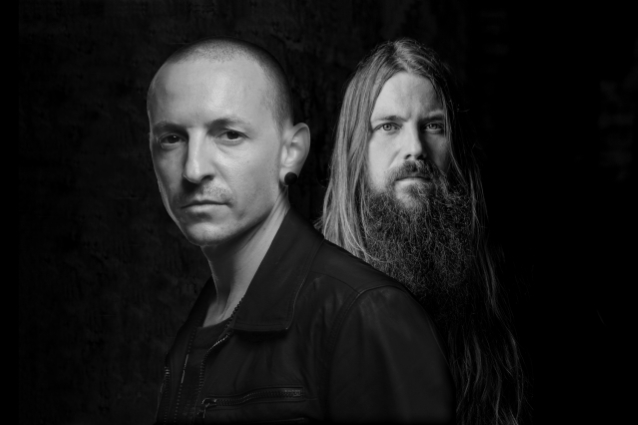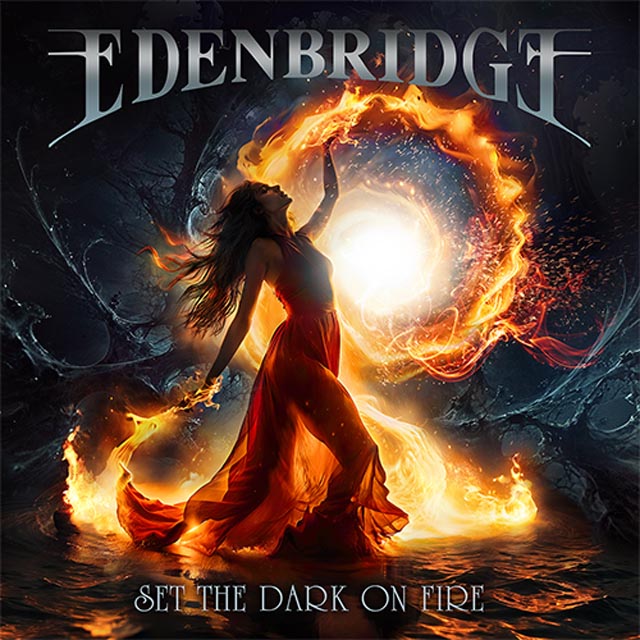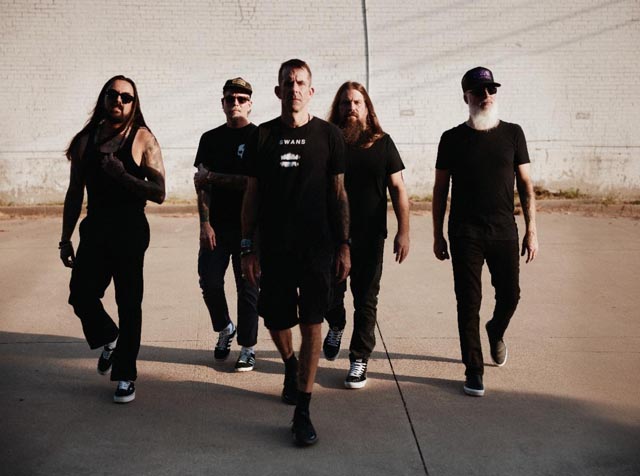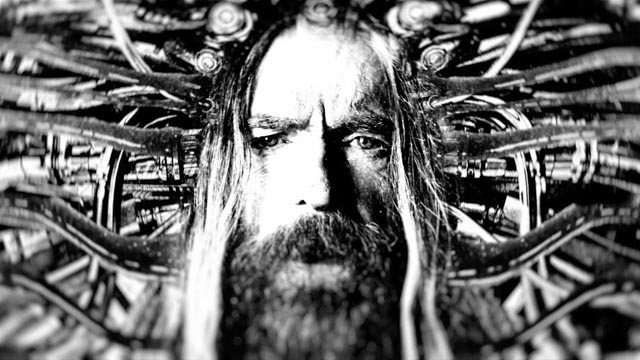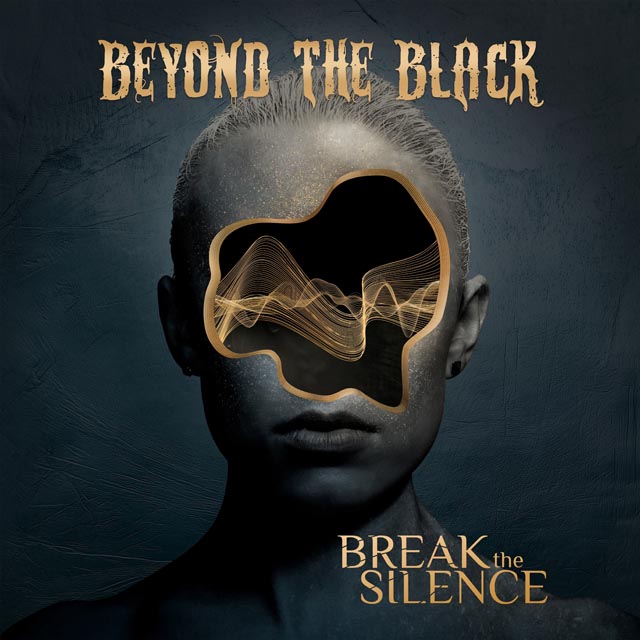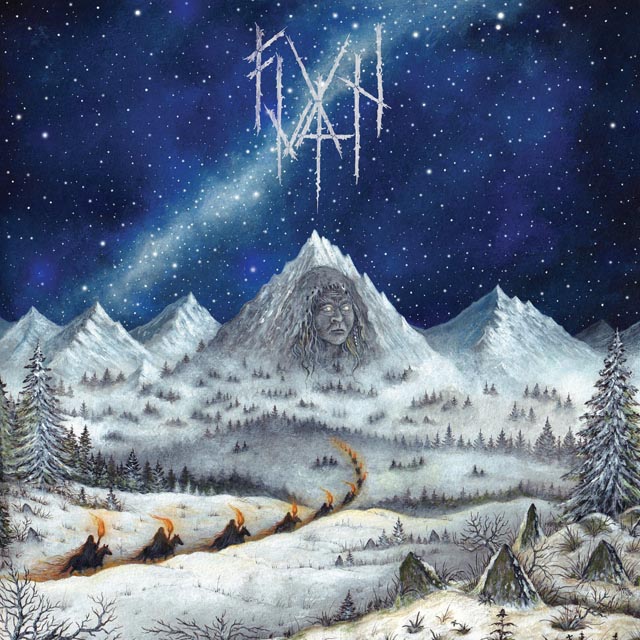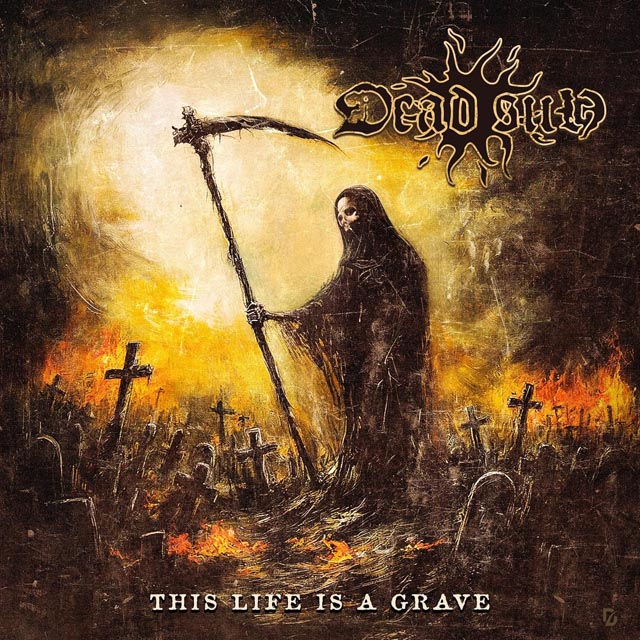 With so much of 2016 being about things going away, it was nice to hear about something being created instead, which is why it was refreshing to hear about Unbuilt. In a world where print journalism continues to shrink almost daily, a culture and lifestyle publication magazine that’s only available physically is an attention-grabber. Then there’s the names of those involved. Music industry veteran Tom Bejgrowicz partnered with Lamb of God’s Randy Blythe, Testament’s Alex Skolnick and Arch Enemy’s Alissa White-Gluz to launch the magazine, which recently released its second issue. The current issue features articles about chef Chris Santos, Alt-J drummer Thom Green interviewing Deftones drummer Abe Cunningham and a profile of Killswitch Engage/Avenged Sevenfold roadie Josh Mihlek, among others. We caught up with Bejgrowicz and Skolnick to chat about why they launched a magazine in 2016, their unique editors and charity, which is a component of the magazine.
With so much of 2016 being about things going away, it was nice to hear about something being created instead, which is why it was refreshing to hear about Unbuilt. In a world where print journalism continues to shrink almost daily, a culture and lifestyle publication magazine that’s only available physically is an attention-grabber. Then there’s the names of those involved. Music industry veteran Tom Bejgrowicz partnered with Lamb of God’s Randy Blythe, Testament’s Alex Skolnick and Arch Enemy’s Alissa White-Gluz to launch the magazine, which recently released its second issue. The current issue features articles about chef Chris Santos, Alt-J drummer Thom Green interviewing Deftones drummer Abe Cunningham and a profile of Killswitch Engage/Avenged Sevenfold roadie Josh Mihlek, among others. We caught up with Bejgrowicz and Skolnick to chat about why they launched a magazine in 2016, their unique editors and charity, which is a component of the magazine.
So I’ll start off by congratulating you on the magazine – you made it to a second issue!
Alex Skolnick: And it was so easy!
Tom Bejgrowicz: You must know the difficulties. Yes, thank you, we appreciate that.
What lead to you deciding to start a magazine? Doesn’t quite seem like print journalism is a growing industry these days.
Tom: Originally, it was something that I had thought of, to do something quarterly, and to have a musician handle the content, to drive it all and to show behind their story and what influences them and what they’re interested in on a daily basis – versus that of a stage persona and standard interviews. That was the initial idea. As Alex knows, that was something that saw people come on with enthusiasm, and then realize how painstaking it can be. So they had to back out here and there, and eventually, Alex sent me a note, copied Randy and said “Hey, the two of us, we’re signed on. We’re still here.” So, it was reevaluated that we could be the team.
As far as print goes, print is something that I know, I love, Alex loves, Randy loves. We just sat there and decided we’re not really into the digital realm, purely in the sense of clicking through and quick likes, moving on and not immersing one’s self in truly understanding and expanding your world. That’s difficult online – not impossible, but the longer we go with it, and the more that people are raised with that as their model, it becomes increasingly more difficult to stop people in their tracks and sit the magazine on the end table, maybe grab a beer or a glass of wine and read something, slow down. So yeah, you’re right, I think we’re going a little bit against the grain, but we believe in it so much that I think we’re willing to try and put our foot down and see if we can get the right group of people who want to join us in that ride.
How long did it take from conception to the printing of the first issue?
Tom: About a year and a half, probably.
Alex: It was a while because, as Tom said, the first blueprint was a little different – there was a bigger team. It was a little bit like trying to start a five-piece band and ending up with a trio. I heard about it through a mutual journalist friend, that was who connected me to Tom, and Randy and I were already friends who had collaborated on various things. For me, I’m a pretty voracious reader, I’ve been writing for a long time. Writing is a skill that’s developed over time. But, everybody writes in some way. You know, not everybody plays an instrument. Writing is a part of daily life, you write emails. But, I’ve also written a blog for several years. I wrote instruction columns for guitar magazines, and a book. Writing feels like a natural extension of expression for me, along with music. So, this seemed like a great vehicle to get to do the writing on a different level, and in this great format of print. It’s a very cool looking magazine.
Absolutely, it looks great. How did Alissa get involved?
Tom: Well, after doing the first one with the three of us, obviously now it’s biannual because of the fact that realistically I’m not sure how I could have been working with two busier musicians than Randy and Alex. So it was pretty extremely busy, and it can get tedious. But, it’s tough to find the time and energy to really nail it down. All along we have been wanting to consider guest editors, or especially expanding the voice beyond three white, American dudes. So we really wanted to get a voice going that kind of came at it from a different angle, and we were sort of struggling with that. As you noted, Bram, making it to a second issue wasn’t easy, and I reached out to Alex and put the concept to him about somebody, some other voice. He got back with Alissa’s name pretty quickly and reached out to her. She said yeah, right Alex?
Alex: Oh, yeah. It made perfect sense. You know, because we want somebody who fits. And there’s no question she fits, she’s very intelligent, very active with social issues, and she and I had recently worked together on a tribute. There’s a Fallen Heroes EP that Metal Allegiance did, to honor recently passed away musicians. She’s on the track for Glenn Frey. So, we collaborated on that and got to know each other. She was the first one that came to mind. Also, she and Doyle were in town for our launch, when we first launched UNBUILT. So, she already knew what it was about, and was already a part of the family. She was a logical first choice to bring in as a guest.
Tom: We didn’t have to get an address, mail copies, and go “Hey, check it out. See what we’re doing.” She was very in tune already, with our approach, and of course her social and political, her socially conscious views, and all that fit perfectly in and helped do what isn’t necessarily the goal, but is a nice fringe benefit of the magazine is that it goes a long way to show that people who are involved and connected with metal and hard rock have a lot more going on in their minds, in their inspirations, and in their creative senses, than people traditionally like to pigeon hole. So having her chime in and add to that mix with her own, because she can stand there and she can present herself just as anybody would stand there and people would assume one way about her. And then she opens her lungs and does what she does. It’s a great contrast in terms of look and feel, so she delivers something that challenges things, and that is part of what we want to do with this.
Alex: Yeah, she has something in common with Randy. If you know both of them personally, when you see them on stage it’s this other persona that is so different from the off stage persona. They’re not stuck in that persona. You sometimes hear about musicians, singers in particular, I can say that because I’m a guitar player, who are on stage even when they’re off stage- 24/7. They’re both very relatable, communicative, easy to hang out with, intelligent people that you see them on stage and it’s scary. This whole other thing that comes out, but they control it, and it’s there for the stage. I think they both have that in common. If you know each of them personally and you see them on stage for the first time, you’ll be in shock.
So, talk about the charity angle, with $1 from the sale of each magazine going to different charities. How important was that to you?
Tom: I think for all of us, this is not our day job. So we all have work that drives us, which inspires us to find these things in the world to write about. So with that in mind, we need to remember that this is something that we’re doing that we can do more with. It’s harder to do that when there’s teams of people, and a lot going on, but we can sit there and go “Well, this is the easy decision, done.” It’s just the right thing to do, that’s ultimately what it is. It’s an extra piece for us, we’re not trying to turn this into a conglomerate or something that Conde Nast will be interested in tomorrow. It’s a creative outlet that is unbiased and only driven strictly by the desire to expose some of these people and things we want to write about as well as do some good at the same time. So, a no-brainer for that, so picking one that covers humans in need and animals in need on a worldwide basis. The charities were picked to represent a worldwide representation as opposed to just something that we know here in the states because the hands of the people involved and the outreach that we have is worldwide. So, that’s why it’s always International Red Cross and Humane Society International, because we all see these things happening – we’re all affected by that. We wanted to join that with the people who support the project as well.
How available is it? Is it at any book stores, magazine stores? I know it’s limited in the number of copies, but do you have worldwide distribution or is it all online?
Tom: It is online at this point, and until proven otherwise. When you’re doing low quantities, you have higher costs. You’re not getting a price point someone would get manufacturing 100,000 of these. So, there’s not a lot of wiggle room as far as wholesale and so on. So, the direct sale is the best scenario for us at this point. In the future, we would love for it to be more widespread, and yet still make a version of it or something about it that’s still special and whatnot beyond a mass printed piece. But, at this point because of the quantities and the fact that we are ad-free and sponsor-free, that’s a difficult scenario for us to task. So having it direct from us is still the best option at this point.
Would you, if a publisher came to you, work with them?
Alex: It probably depends on the publisher.
Tom: You’re right. We have had these conversations as a team before. Yes, we are open to that, and if we were to partner with someone, it would be to partner with someone who we believe in and respect. That is if somebody came on as far as a company as a sponsor versus a publisher. It would need to be someone that we respect and feel was in line with what they do versus what we’re attempting to do. Alex, does that sound right?
Alex: Yeah, I think at this point, we want to feel good about what we’re presenting. It’s just that so far it’s developed totally organically. If at some point we had an option for somebody to partner with us, it’s established. We’ve already created the template for what it is. As long as it is a company that respects that, and lets us do the magazine the way that we want to do it, then it would be wonderful. I don’t think we would do it just for the sake of having more recognition if it meant compromising the magazine.
Tom: I think, Bram, something that we ran into, myself especially, in that year and a half period prior to releasing an issue was the fact that in talking to people who could have potentially partnered with us or sponsored us is that they were like “I don’t get it, I can’t see it.” is what I’ve heard a lot. So I was like ‘Okay, that’s fair.’ So we’ve done a few issues now, and in going forward, people can see it. They can put their finger on it and know what we’re doing. That was something, that in the beginning, wasn’t really feasible for most people because it was this abstract thought that didn’t really have any precedence. That’s tough for a lot of people to take on, because they’re not able to see the end result. So, having it now under our belt and moving forward, we would definitely be open to that, for the right people with the right situation. It’s not dissimilar at all to having release your own records, and then having record labels contacting you.
Alex: And now we have two issues, we really have a calling card. And the response is just great. When people see it, they just get it. They want to know more about it. The subjects really like it. I just saw Chris Santos last night and he was just raving about it and said it’s probably his favorite piece on him. So, I think that once it gets out, once more people catch on to it and realize the quality, then there may be some potential for growth.
Bram: How much of issue three planned out so far?
Alex: Not much.
Tom: Yeah. First off, the editorial content comes from each of the people directly. It’s not myself or anyone else throwing out ideas and saying “Pick up which ones you’re interested in.” So, I would imagine that realistically, next week is the time when I emailed everyone on the team yesterday saying this, that I’ll reach out to them next week. I met with a printer this morning and we were looking at different opportunities and options because 2017 is a new year, and we did the two, we completed that cycle. Who knows the flexibility and change that we can enact. So, I think at that point it will be put out to everybody that we will start solidifying options. At that time, of course we don’t want it to be heavy on one subject or angle, so we really want to spread it out. There will be some discussion as ideas come to the table about trying to balance it out. There could have been another food story last time, but with Santos in there, we wanted to make sure that he got the right feature. We had pretty prominent people in this issue- Molly Crabapple you have doing art, she’s a very hot commodity right now. It would be unfair to another artist to have to share that issue.
So we want to keep the artists spread out, which is why she was also the featured artist, which was great for us anyway, to expand her. But, not wanting to tread on that editorially, things will come together starting very soon, but it comes from each of the people individually. Realistically, this isn’t a situation where someone is up in a tower saying “Hey, I’m paying you a salary. Here’s the ideas, go out there a write a story.” We’re all doing this out of passion, and if anybody starts dictating what stories each person should do, the passion goes away. We really want that to remain intact, so that everybody is super pumped about what they bring to the table and super excited to add that into the overall mix, again, like an album. An album has ebb and flow, peaks and valleys, the fast parts set up the slow parts, the serious ones set up the fun ones, and so on. So, that’s an approach I don’t think any of us can escape.
Alex: Yeah, and now that we’ve done the types of stories we’ve done, I think it opens up a lot. I knew I wanted to do pieces on artists, on architects, on chefs, on novelists. We’ve actually covered a lot of ground in the first two issues. I think there’s quite a few possibilities going forward. I don’t know about you, Tom, I’m getting pitched. People are pitching stories to me, it’s nice, but I don’t know what to tell them.
Do you envision yourself expanding your list of musician/artist contributors? Or, are you keeping it with the two of you, Randy, and Alissa?
Tom: That is something that would definitely be a part of the conversation next week. I’ve been pricing out printing and so on, how many pages can we fit, there’s a maximum budget. I’m trying to get four more for issues three and four. So, if we can get those extra pages, it would be fun to involve a roaming guest editor on a short piece or two, and have that voice in there. But, that is something that will be coming up. We have long been talking about that and people like Chelsea Wolfe, and artists that are outside of our realm but are these fringe people who have a great voice and artistic feel and style and take on life are definitely going to at least look at those opportunities.




